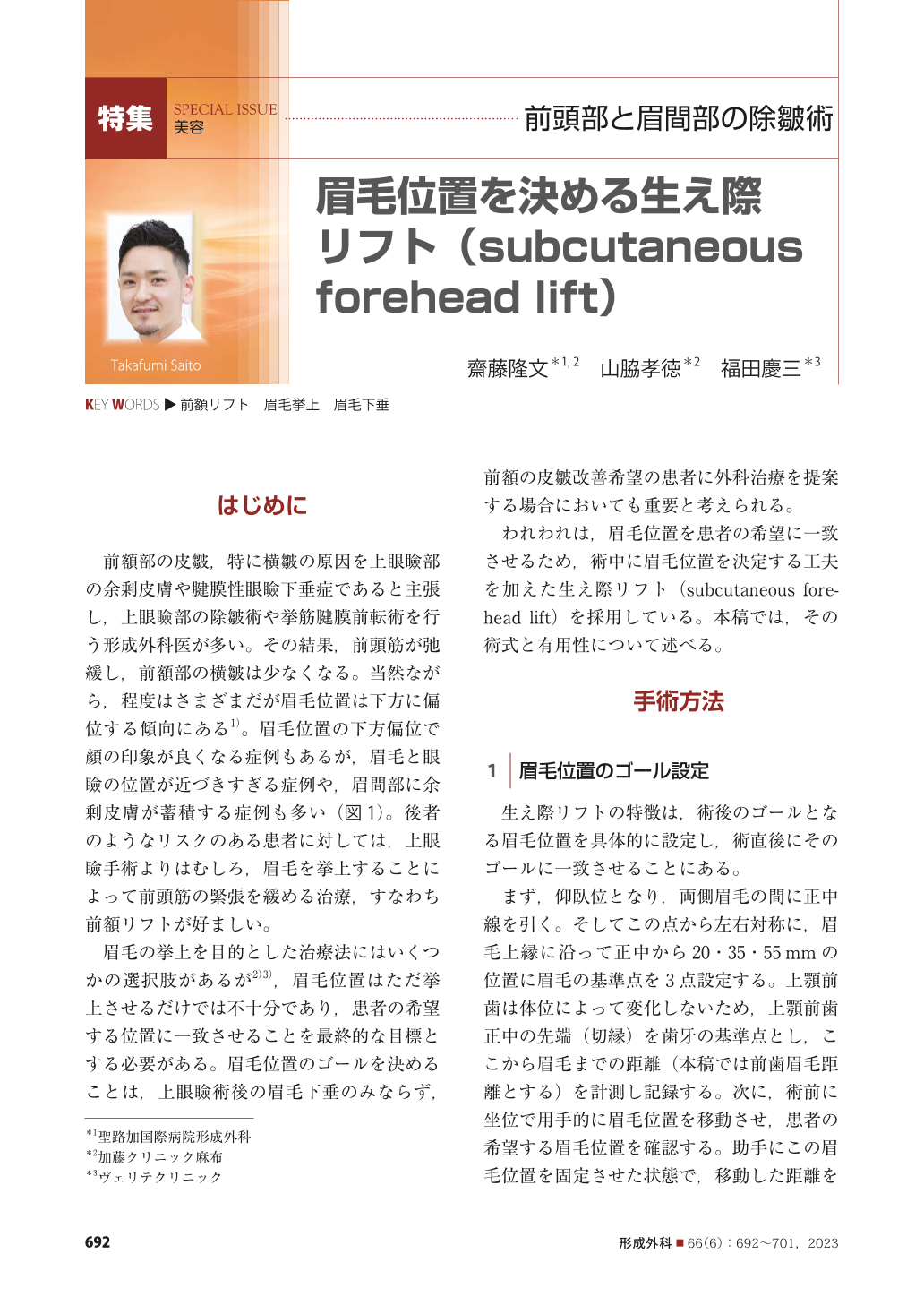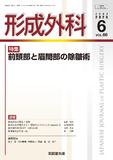Japanese
English
- 有料閲覧
- Abstract 文献概要
- 1ページ目 Look Inside
- 参考文献 Reference
はじめに
前額部の皮皺,特に横皺の原因を上眼瞼部の余剰皮膚や腱膜性眼瞼下垂症であると主張し,上眼瞼部の除皺術や挙筋腱膜前転術を行う形成外科医が多い。その結果,前頭筋が弛緩し,前額部の横皺は少なくなる。当然ながら,程度はさまざまだが眉毛位置は下方に偏位する傾向にある 1)。眉毛位置の下方偏位で顔の印象が良くなる症例もあるが,眉毛と眼瞼の位置が近づきすぎる症例や,眉間部に余剰皮膚が蓄積する症例も多い(図1)。後者のようなリスクのある患者に対しては,上眼瞼手術よりはむしろ,眉毛を挙上することによって前頭筋の緊張を緩める治療,すなわち前額リフトが好ましい。
眉毛の挙上を目的とした治療法にはいくつかの選択肢があるが 2)3),眉毛位置はただ挙上させるだけでは不十分であり,患者の希望する位置に一致させることを最終的な目標とする必要がある。眉毛位置のゴールを決めることは,上眼瞼術後の眉毛下垂のみならず,前額の皮皺改善希望の患者に外科治療を提案する場合においても重要と考えられる。
われわれは,眉毛位置を患者の希望に一致させるため,術中に眉毛位置を決定する工夫を加えた生え際リフト(subcutaneous forehead lift)を採用している。本稿では,その術式と有用性について述べる。
Wrinkles at the forehead and glabellar area are one of the major aging signs. Some surgeons may consider the cause of such wrinkles to be hyperactivity of frontalis muscle as compensation for upper eyelid aging; however, these wrinkles are attributed to progressive laxity of not only the upper eyelid but also the scalp and forehead soft tissues. Eyebrow ptosis can thus occur even after an upper blepharoplasty has been performed, since laxity of forehead and glabellar remain.
There are many well-described surgical approaches used to address eyebrow aesthetics, but they may not be sufficient for a precise adjustment of the eyebrow position during surgery. We describe a novel subcutaneous forehead lift that can be used to decide eyebrow positions. Using this procedure, we can place eyebrows at the ideal height and harmonize upper face structures.

Copyright© 2023 KOKUSEIDO CO., LTD. All Rights Reserved.


